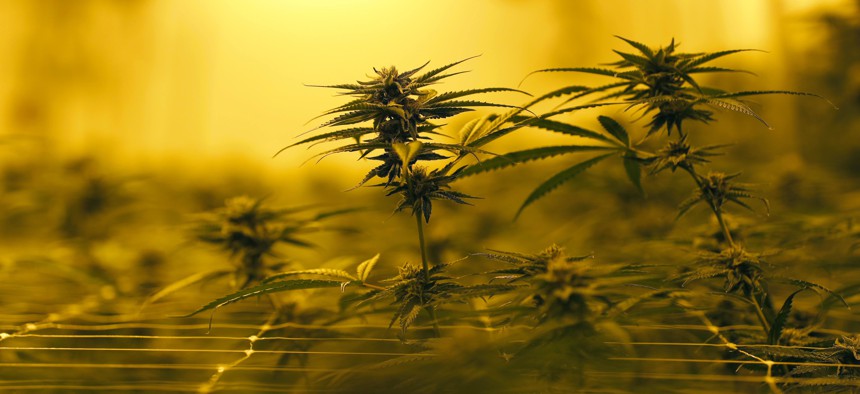Marijuana Tax Revenues ‘Highly Unpredictable,’ Researchers Warn

AP Photo/Gerald Herbert
They urge states to be careful when planning for how to spend the money.
Policymakers in states with legalized recreational marijuana should use caution when deciding how to use tax revenues flowing from the cannabis industry, a new report recommends.
Researchers with The Pew Charitable Trusts point to a number of factors that make it difficult to accurately forecast how much money will come from taxes on marijuana sales. They suggest that options like actually collecting the money before plugging it into a budget or putting it toward savings could be smart moves.
Nevada’s first six months of pot tax revenues, the researchers note, were about 40% higher than expected, while in California they were about 45% below projections.
“We’ve seen revenue estimates in states, especially in the first year, vary a lot,” Alexandria Zhang, a research officer with Pew and one of the authors of the report, told Route Fifty.
“The takeaway for policymakers is that legalized revenue from this source is still highly unpredictable,” she added. “We caution policymakers to use it in careful ways.”
State budget forecasting for marijuana tax revenues is difficult for a number of reasons.
There’s a lack of historical data to predict what demand will look like and how prices will fluctuate and there can be uncertainty around how new markets for pot will take shape in different states.
It’s also possible that sales coming online in one state could put a dent in the industry in a neighboring state.
Complicating matters further is that taxation and regulations can differ between states, meaning it can be difficult to make comparisons between them.
“We’ve definitely seen states learning from other states,” Zhang said. “The caveat is that there’s still uncertainty specific to every state.” But she added that “states are gathering more state specific information over time, so they are able to improve the reliability of revenue estimates.”
Illinois earlier this year became the 11th state to move ahead legalizing recreational marijuana for adult use. Colorado and Washington were the first states to do so and their retail markets have been up and running since 2014.
State tax revenues from recreational marijuana aren’t colossal when compared to the overall size of state budgets, but they aren’t small either.
Colorado pulled in about $1 billion in tax, license and fee revenues from medical and recreational sales during the roughly five year period from 2014 to July of this year. By comparison, the state’s total general fund revenues were about $11.7 billion in fiscal year 2018, according to figures compiled by the National Association of State Budget Officers.
In Washington state, the Pew report says, marijuana accounted for $420 million in collections in fiscal 2018, compared to $415 million for tobacco and $314 million for liquor.
States have different approaches in place for using the revenues.
For example, Nevada funnels some of its tax revenues, those from retail sales, toward its “rainy day” reserve fund. And California and Colorado, the report says, gather the taxes in a designated account, then use the money in the year after it's collected.
“We have new revenue, we should spend it, but we don’t know how volatile it’s going to be,” Larson Silbaugh, principal economist with Colorado’s Legislative Council, told Pew.
“We don’t want to have to make agencies give money back if there’s not enough, or rescind appropriations,” he added. “So we’ll just budget it in the year after it’s collected.”
A full copy of the report can be found here.
Bill Lucia is a Senior Reporter for Route Fifty and is based in Olympia, Washington.
NEXT STORY: States Kick Off 2019 With Widespread Economic Growth






